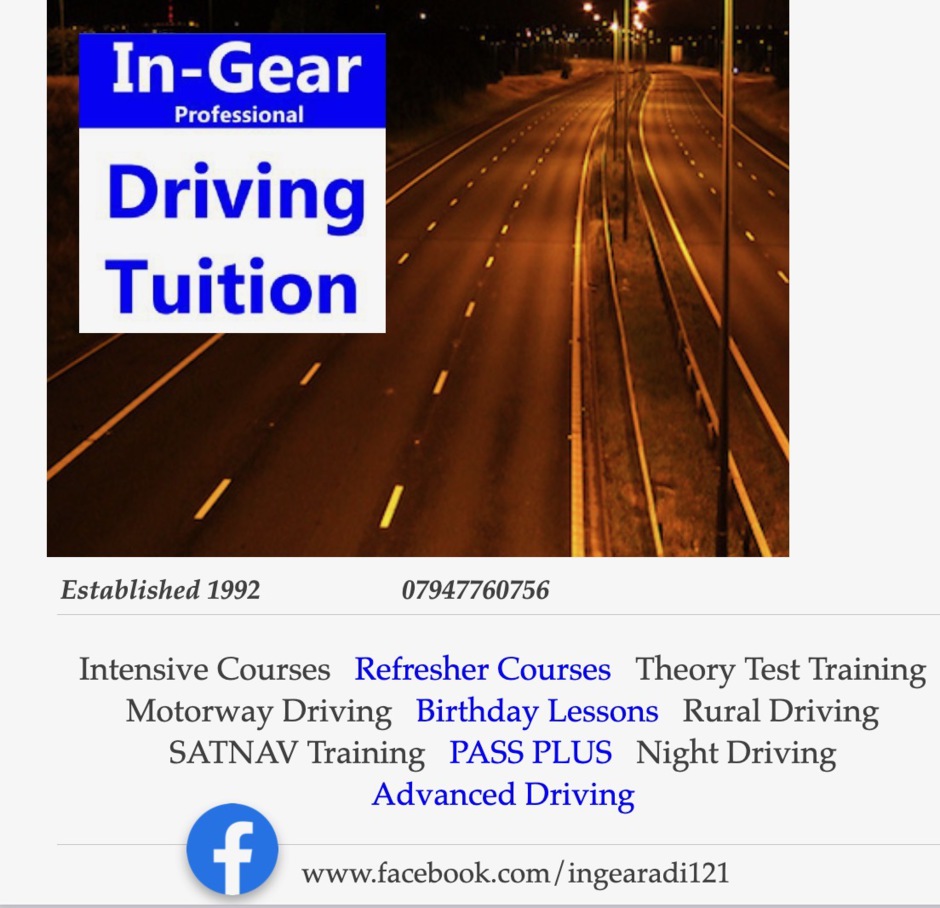Intensive driving courses - a close look
Here in the UK, driving is undoubtedly the most convenient way to get around. Millions of us do it because it gives us unrivalled freedom and choice, but with the Department of Transport reporting
that 2,946 people were killed as a result of road accidents in 2007 and a further 27,774 were seriously injured, it`s crucial that we seek professional tuition and are properly prepared for the
rigours of the road.
What are intensive driving courses?
Intensive driving courses are generally considered to be the quickest way to learn to drive. They are carried out over a week, a weekend or another fixed time period and help you learn in just a
short space of time what it could otherwise take around 14 months to learn with weekly one- or two-hour lessons.
Intensive driving courses are available in different formats, including:
. Residential courses
These allow you to stay at accommodation from which you are collected daily by an instructor - this gives you the chance to enjoy tuition from a highly recommended driving school that may be
otherwise out of reach.
. Weekend courses
These are usually residential and give you an intense weekend`s learning.
. Week-long courses
Traditionally held over five days with several hours` tuition on each day. These can vary based on the level of tuition you need and are normally available for periods of 20hrs to 45hrs depending on
how much experience you have enjoyed previously.
. Quick start courses
Designed to give completely new drivers who`ve had no previous experience behind the wheel and introduction to driving.
. Test rescue courses
Designed for those who have just failed a driving test with tuition focused specifically on the areas that caused you to fail originally.
Many intensive driving courses will also incorporate the theory and practical driving tests.
What to expect on a theory/practical driving test
The theory test covers driver attitude and awareness, traffic signs and regulations, the effects of alcohol, drugs and tiredness on driving and safety and environmental aspects of learning. It is
split into two parts - a multiple-choice section and a hazard awareness test. You can prepare for the theory test by reading the Highway Code and using the materials supplied by the Driving Standards
Agency (DSA).
The practical test involves driving around a course that is as uniform as possible to test you in a variety of conditions/scenarios. First you will be asked to read a number plate from a set distance
to test your eyesight before you are asked two vehicle safety questions. You then enter the vehicle with the examiner and follow his directions. You are allowed to make up to 15 minor errors as part
of the course - 16 minor errors or one dangerous or serious mistake leads to an automatic failure. Gaining professional tuition is vital to ensure you`re well prepared for test day.
What about advanced driving courses?
Once you have obtained a full driving licence you can apply to take the Pass Plus course, which involves six hours of tuition testing you on driving in town, on rural roads, on dual carriageways, in
all weathers, at night and on motorways. If your instructor is satisfied with your performance he awards you the Pass Plus certificate which can earn you significant discounts on your car insurance
providing you passed your test within the last 12 months.
Safe driving tips
If you are to pass your test it`s vital to drive safely - do not tailgate; check mirrors regularly; check your blind spot when moving off, pulling out and overtaking; allow extra stopping distances
in bad weather; stick to the speed limit; do not drink and drive. Remember avoiding claims and convictions can help to keep your car insurance premiums at an affordable level

